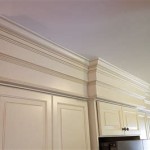Keeping Your Kitchen Cabinets Spotless: A Comprehensive Guide to Cleaners
The kitchen is the heart of the home, and maintaining its cleanliness is paramount. However, when it comes to kitchen cabinets, grease, grime, and spills can accumulate, leaving them looking dull and uninviting. To address this issue, it's essential to select the right cleaner for the job.
In this article, we will delve into the essential aspects of cleaners for kitchen cabinets, guiding you through the various types, ingredients, and application methods. Armed with this knowledge, you'll be able to restore the sparkle to your kitchen cabinets and keep them looking their best.
### Types of CleanersThe type of cleaner you choose will depend on the material of your kitchen cabinets. Here are the most common types:
- Mild Detergents: Suitable for most wooden cabinets, these detergents use gentle cleansers to remove dirt without damaging the finish.
- Specialized Cleaners: Designed specifically for lacquered or painted cabinets, these cleaners contain solvents that dissolve tough stains while protecting the surface.
- Cream Cleaners: Ideal for removing stubborn grease and grime, cream cleaners have a thicker consistency that allows them to adhere to vertical surfaces.
- Vinegar-Based Cleaners: A natural and effective option for cleaning wooden cabinets, vinegar is a gentle acid that breaks down dirt and grease.
When choosing a cleaner for kitchen cabinets, pay attention to the ingredients. Here are some key components to look for:
- Surfactants: These are the main cleaning agents that remove dirt and grime by breaking down the bonds between them and the surface.
- Solvents: Used in specialized cleaners, solvents dissolve greasy stains and adhesives.
- Acids: Mild acids like vinegar help to dissolve dirt and prevent the buildup of soap scum.
- Abrasives: Found in cream cleaners, abrasives gently scrub away stubborn stains.
Proper application is crucial to achieving optimal cleaning results without damaging your kitchen cabinets. Here's how to apply different types of cleaners:
- Mild Detergents: Dilute in water and apply with a soft cloth or sponge.
- Specialized Cleaners: Follow the manufacturer's instructions carefully. Avoid using abrasive sponges or brushes.
- Cream Cleaners: Apply directly to the stained area and allow it to sit for a few minutes before scrubbing gently.
- Vinegar-Based Cleaners: Dilute in water and spray on the cabinet surface. Allow it to sit for a few minutes and wipe away with a clean cloth.
Choosing and using the right cleaner for kitchen cabinets is essential for maintaining their beauty and functionality. Understand the different types of cleaners available, the ingredients they contain, and the proper application methods. By following the tips outlined in this article, you can keep your kitchen cabinets sparkling and inviting for years to come.

How To Clean Kitchen Cabinets 9 Basics Bob Vila

How To Clean Kitchen Cabinets Everyday Skate

How To Clean Kitchen Cabinets Dianella Polishing

Kitchen Cleaning Checklist Weiman

Kitchen Cabinet Cleaning Tips For Stained Or Painted Cabinets

How Often Should You Really Clean Your Kitchen Cabinets

We Tried 5 Methods To Clean Greasy Wood Cabinets And The Winner Is Ridiculously Effective Kitchn Cleaning Kitchen

How To Clean Grimy Kitchen Cabinets With 2 Ingredients

Ultimate Guide To Cleaning Kitchen Cabinets Cupboards Foodal
:max_bytes(150000):strip_icc()/ways-to-clean-wood-kitchen-cabinets-3017289-01-765f893e7cca49a1ab72d7c49efdf518.jpg?strip=all)
Tips For Cleaning Food Grease From Wood Cabinets
Related Posts








